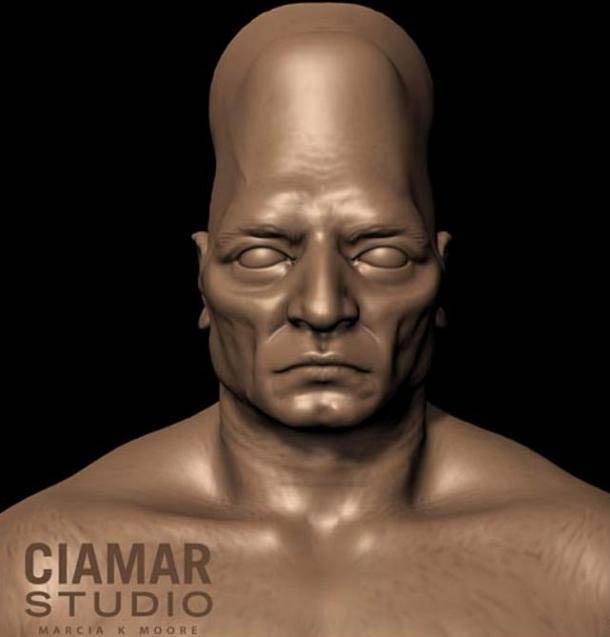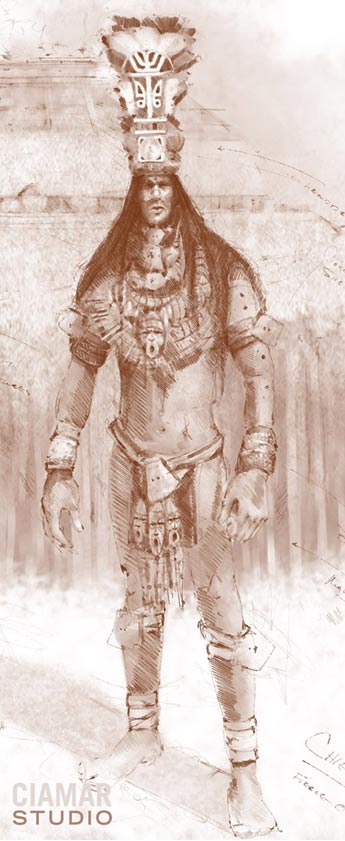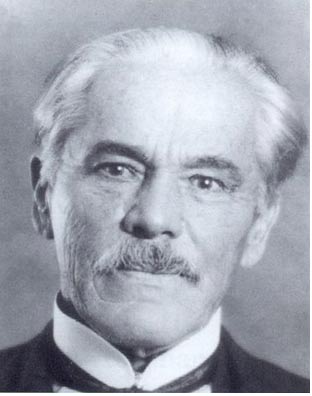
The Establishment Has Already Acknowledged A Lost Race of Giants - Part 1
One of the most controversial subjects regarding the ancient prehistoric cultures of North America concerns what we refer to as the Unique Physical Types (UPT). For the purposes of what follows, these UPT are often gigantic humanoid skeletons with hyper elongated or high-vaulted crania, occasional extra or pathological detentions (including several reports of double or triple rows of teeth), and are usually discovered in the burial mounds and associated graveyards of the Adena-Hopewell, Archaic Cultures, and Southeastern Ceremonial Complex.
Accounts of a Lost Race of Giants
It is common today for alternative history researchers to tell the story of how these beings were discovered en masse throughout the 19th and early 20th centuries. Historians, antiquarians, and archaeologists recorded the discovery of the Unique Physical Types all over the United States, with a large concentration found in the mounds and earthworks of the Ohio River Valley and along the Mississippi River. These accounts can be found in any number of county, township, and state histories, as well as anthropological literature from both inside and outside of the Smithsonian Institution. Here are several examples:
Kentucky: “From a mound on the farm of Edin Burrowes, near Franklin, were exhumed, in May, 1841, at a depth of over 12 feet, several human skeletons. One, of extraordinary dimensions, was found between what appeared to have been two logs, covered with a wooden slab. Many of the bones were entire. The under jaw-bone was large enough to fit over the jaw, flesh and all, of any common man of the present day. The thigh-bones were full six inches longer than those of any man in Simpson County. Teeth, arms, ribs, and all, gave evidence of a giant of a former race”. (History of Kentucky, Lewis Collins)

Artist’s representation of a North American giant. Credit: Marcia K Moore / Ciamar Studio. Visit: http://www.marciakmoore.com/giants.html
Jo Daviess County, Illinois : “The mounds on the bluff have nearly all been opened within the last two or three years…In all that have been opened the excavators have found in the center a pit that was evidently dug about two and a half feet below the original surface of the ground…The bones in this pit indicate a race of gigantic stature, buried in a sitting posture around the sides of the pit, with legs extending toward the center”. (The History of Joe Daviess County)
“Near the original surface, 10 or 12 feet from the center (of the mound), on the lower side, lying at full length upon its back, was one of the largest skeletons discovered by the Bureau agents, the length as proved by actual measurement being between 7 and 8 feet. It was all clearly traceable…” (12th Annual Report of the Bureau of Ethnology)
- Landscape of the Ancients: The Hopewellian Burial Mounds Lift the Veil on Prehistoric Native American Cultures
- Adena Axis Mundi & Large Skeletal Remains: Archaeology of the Grave Creek Mound - Part I
Kanawha Valley, West Virginia : “No 11 is now 35 by 40 feet at the base and 4 feet high. In the center, 3 feet below the surface, was a vault 8 feet long and 3 feet wide. In the bottom of this, among the decayed fragments of bark wrappings, lay a skeleton fully 7 feet long, extended at full length on the back, head west…. Nineteen feet from the top…in the remains of a bark coffin, a skeleton, measuring 7.5 feet in length and 19 inches across the shoulders, was discovered”. (12th Annual Report of the Bureau of Ethnology)
“Within the village of Brownstown, ten miles above Charleston and just below the mouth of Lens creek, is another such ancient burying ground…At Brownstown, not long since, two skeletons were found together, one a huge frame about seven feet in length and the other about four feet, a dwarf and deformed”. (History of the Great Kanawha Valley)

More Anomalous Giant Remains
Florida: “Pursuing my investigations, and excavating further toward the south east face of the mound, I came upon the largest stone ax I have ever seen or that had ever been found in this section of the country. Close to it was the largest and most perfect cranium of the mound…Near by the side of this skull were the right femoris, the tibia, the humerus, and part of the radius, with a portion of the pelvis directly under the skull…Anticipating a perfect specimen in this skull, I was doomed to disappointment, for, after taking it out of the earth and setting it up, so that I could view the fleshless face of this gigantic savage, in the space of two hours it crumbled to pieces, except small portions. According to measurement of the bones of this skeleton, its height must have been quite 7 feet”. (Annual Report of the Boards of Regents of the Smithsonian)

Digital sketch, ancient Florida giant. Image courtesy of Marcia K. Moore, Ciamar Studio
Louisiana: “In the same line of abnormality was the finding of one skull in which the detention reached the unusual number of forty teeth, the increase consisting of eight additional incisors…The formation of the skull found in the Larto mound, as compared with those of other localities, is highly anomalous…The anomaly in these cases cannot be ascribed to artificial disfiguration, for, were it such, the otherwise symmetrical development of the other parts would be impossible…their remarkable conformation could not possibly have been the result of bandages or other external appliances, but was undoubtedly congenital”. (Publication of the Louisiana Historical Society)
Etowah Mound Group : “Grave A, a stone sepulcher, 2.5 feet wide, 8 feet long, and 2 feet deep, was formed by placing steatite slabs on edge at the sides and ends, and others across the top. The bottom consisted simply of earth hardened by fire. It contained the remains of a single skeleton, lying on its back, with the head east. The frame was heavy and 7 feet long”. (12th Annual Report of the Bureau of Ethnology)

Artist’s conception of the Etowah site (9 BR 1), a Mississippian culture archaeological site located on the banks of the Etowah River in Bartow County, Georgia. Built and occupied in three phases, from 1000–1550 AD. (Herb Roe/CC BY-SA 4.0)
These examples represent the various anomalous features of the Unique Physical Types, which were encountered in the 19th and early 20th centuries. Spatially and culturally, they illustrate the extensive temporal and geographical range of these types. The Kanawha Valley Mound Builders left their remains in an area where some of the oldest Fayette Thick Adena Pottery and diverse types of mound construction have been found. It has recently been suggested that sites in West Virginia may push the “acceptable” beginning of the Early Woodland Period back to 1400-1300 BC.
- Titans Under the Earth: Evidence for The Tall Ones, and the Ancient Mounds of Pennsylvania
- Lovelock Cave: A Tale of Giants or A Giant Tale of Fiction?
The samples from Illinois come from a region where Archaic era mounds have been found, often with Hopewell Mounds built over and into them hundreds or thousands of years later, as in the case of Elizabeth Mound 1 and Peter Klunk Mound 7. The Etowah Mound (Mound C) is ascribed to the Mississippian Cult, dated to 950-1450 AD.
Denial of the Unique Types
After the Government and Philanthropies took over American Archaeology in the 1900s, the establishment undertook the policy of flatly denying the existence of anomalous remains.
The actual beginning point for the revisionist tendency in the National Museum was very early. By 1851, E G Squier was working to debunk theories of pre-Columbian contact, and several decades later, Gerald Fowke would attempt to discredit and jettison the work of virtually every researcher in the field up to his day, including the skeletal measurements of his fellow agents in the Bureau of Ethnology. However, the denial of the Unique Types truly got underway during the reign of Ales Hrdlicka as the Curator of Anthropology at the Smithsonian (circa 1903).

"Ales hrdlicka" by Unknown - Archive Museum of Aleš Hrdlička in Humpolec. (CC BY-SA 3.0)
Hrdlicka seems to have made a hobby of constantly disparaging the notion that anomalous skeletons were ever found. This was done in scholarly works as well as public venues:
And the ‘giant’ and ‘eight-foot’ skeleton is to this day the almost stereotyped feature of many an amateur report of a find of skeletal remains in Florida as well as other parts of the country. All these reports…it may be said once and for all, are exaggerations.
Dr. Hrdlicka blames the ‘will to believe’ of amateur anthropologists for many reports of ‘discoveries’ which find their way to his office with monotonous frequency…the purported ‘finds’ describe a race of ancient giants between 7 and 8 feet tall with bones and jaws considerably larger than those living today…Next to human ‘giants’ Dr. Hrdlicka reports, fancy finds its sway with human ‘dwarfs’.
Interestingly, Hrdlicka’s name appears in several reports of discoveries of gigantic skeletons during his tenure at the American Museum:
The skeletons of these Hitherto Unknown American Aborigines Showed They All Ranged in Height from Six and One-Half to Seven Feet…Excavating in the sand dunes of the sun-sprayed Golden Isles, Georgia, archaeologists have gouged out the strange record of an amazing prehistoric race of giants…What manner of men were these, the members of whose tribe all averaged six and one-half and seven feet tall?...Some of the first skulls to be disinterred by Preston Holder have already been examined at the Smithsonian Institute by Dr Ales Hrdlicka, foremost authority on North American Types.
Top Image: 3d Digital Sculpture of Giant with hair, copper breastplate, and gorget. Image courtesy of Marcia K. Moore, Ciamar Studio. For more reconstructions of giants, visit Marcia K. Moore’s website
Read Part 2: Documented evidence of giants and the institutionalized policy of denial.
By Jason Jarrell and Sarah Farmer
Updated March 12, 2021.
References
History of Kentucky, Volume 2. Lewis Collins, 1878. Giants appear in the text on pages 107, 653, 654, 666, 683, and 722 https://archive.org/stream/collinshistoricav02coll#page/n7/mode/2up
The History of Joe Daviess County, Illinois, 1878. Reference is page 843 https://archive.org/stream/historyofjodavie00kett#page/844/mode/2up/search/Ancient+Mounds
12th Annual Report of the Bureau of Ethnology, 1891. https://archive.org/stream/annualreportofbu1218901891smit#page/n7/mode/2up
History of the Great Kanawha Valley, by John P Hale, 1891. Reference on page 47.
https://archive.org/stream/historyofgreatka01madi#page/n7/mode/2up
Annual Report of the Boards of Regents of the Smithsonian, 1874. See Antiwuities of Florida, page 392.
Publications of the Louisiana Historical Society 1896. Mounds of Louisiana, Part 1. Reference begins on page 20.
https://archive.org/stream/publicationslou02socigoog#page/n143/mode/2up
Building Woodland Archaeological Units in The Kanawha River Basin, West Virginia, by Patrick D Trader, in Woodland Period Systematics in The Middle Ohio Valley, edited by Darlene Applegate and Robert Mainford, 2005.
For Elizabeth Mound number 1, see The Archaic and Woodland Cemeteries of the Elizabeth Site in the Lower Illinois Valley edited by Leigh and Buikstra, 1988.
For Peter Klunk Mound 7, see Hopewell and Woodland Site Archaeology in Illinois, Bulletin 6 Illinois Archaeological Survey
https://uofi.app.box.com/s/gw2ah1c1wyi602w27umt
Essay attached to Memoir on the European Colonization of America, page 20.
https://archive.org/stream/cihm_42357#page/n23/mode/2up
Archaeological History of Ohio, Gerald Fowke.
https://archive.org/stream/cu31924005690155#page/n5/mode/2up
Anthropology of Florida, Ales Hrdlicka 1922.
https://archive.org/stream/anthropologyoffl00hrdli#page/n5/mode/2up
Newspaper article discovered in a clipping file by Ross Hamilton, author of A Tradition of Giants: The Elite Social Hierarchy of American Prehistory.
The Salt Lake Tribune, 8/21/1936, courtesy of the excellent Greater Ancestors website:
http://greaterancestors.com/the-golden-isles-giants/















Comments
People, trees and animals could theoretically grow to much taller proportions within a HOLLOW EARTH, where the gravity is different. The cave tunnels (e.g., in Kentucky, etc.) may at one time, or now still do, lead to an inside.
But the question here is WHY the industry chose to hide the fact of these bigger human-like people, and not promote the finds and new and exciting. They obviously want to keep us in ‘the dark’ about the TRUTH. But why? Best guess is that they (powers-that-be) work to prevent us knowing that the aboriginal cultures of Earth were all bombed and destroyed in the Atlantis event (circa 115k BC, adding the zero back to Plato’s timeline) by an alien force (Annunaki?) who later spawned the Sumerians (the black-headed people of the Hebrew Bible) who are here to take over the planet from the survivors (naive gentiles?) of that deadly event and the Ice Age that followed. Or what’s your guess?
Honest DNA studies of human remains will help us understand who the ancients were, and how they were different or similar to people of today. But if they are hiding bones, how can we expect this to come to light?
Nobody gets paid to tell the truth.
Reviewing earlier comments;- A theory was proposed correlating planetary motion with terrestrial evolution. The basic motion of the planets all moving slowly towards the sun on a logical organic planetary life-cycle, gives a discovery for terrestrial evolution. Life growing and expressing itself to a maximum size at a mid point through the goldilocks zone and then a reduction in size as we warm and get closer to the sun as described in earlier comments.
To support this theory an astronomy expert has produced a model titled "the cosmic drag theory" mathematical and physics calculations support this planetary motion model of which terrestrial evolution also offers supporting evidence.
Can someone email me where this modern archaeological dig is recorded in some archaeo journal, i think the dig was in a Tennessee mound, in which the archaeologist found a femur which he said indicated it belonged to a human that would have been 11 feet tall? I cannot remember where I read that but it was either on this site, and perhaps in a comment or some forum on Nephilim or a book, I think the comment said that “not all the finds were in the long past” and referenced the title of the article the archaelogist wrote of his find, WHICH I DID TRACE to a website that had such scientific journals, but I could only read it for $45, and I can’t find any saved page I may have made or book mark and am too exhausted and in too much pain and am homeless in bad weather to do a super thorough search of my browser history. So please send me the link as I am writing a book on Nephilim and losing that reference actually delayed me from completing my book as I wanted to include it as the icing on the cake of proofs.
email: [email protected] or zartann on Gab.com
"As you would have done to you so do to others." - Jesus
“About 13,000 years ago, more than three-fourths of the large Ice Age animals, including woolly mammoths, mastodons, saber-toothed tigers and giant bears, died out.”
Life grew to a maximum size when environmental conditions allowed this and since life has been reducing in size and logic suggests so have humans. There is a planetary model that suggests why and you will find it known as the cosmic drag theory. Discrepancies with data and observations can be corrected with this concept and I believe that animal evolution also correlates to the concept. An organic process of planetary motion suggests the planets move towards the sun and this change produces changing environmental conditions described through terrestrial evolution. If the Earth was further from the sun millions of years ago a year may have 420 days, seasons and a year would be longer, larger more cumbersome creatures would have existed. As we get closer to the sun we warm up, time is relatively shorter and so species change and adapt, get smaller, less hair, less blubber…..
The NBA Giants! Yes! Right on the nose. And acutally men in the so-called ‘1st world’ have been getting taller in recent generations.
Pages